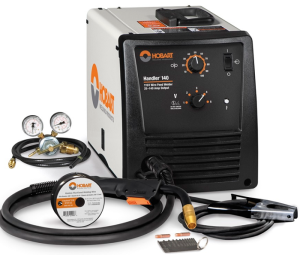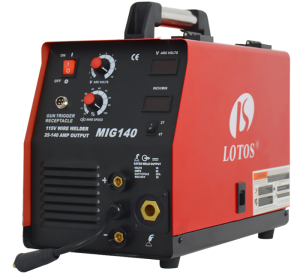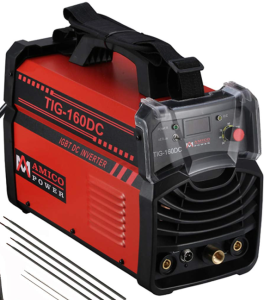Finding an affordable, quality welder can seem daunting for hobbyists or professionals on a budget. With countless models on the market offering varying features at different price points, it’s hard to know where to start. This article provides an in-depth look at some of the top budget-friendly welders available, outlining the key factors to consider and top picks in both MIG and TIG welders. Whether you’re a DIYer tackling projects around the house or a pro welding on the job site, read on for recommendations on the best budget welders to meet your needs.
Top Budget Welder Picks
When evaluating the best budget welders, key aspects to consider include type (MIG vs. TIG), amperage, materials being welded, portability needs, and special features. Based on these criteria, here are some top affordable options to consider:
MIG Welders
Forney Easy Weld 261

140A output
Ideal for DIY and hobby welding
Up to 1/4″ mild steel
Weighs 19 lbs
Hobart Handler 140

115V flux core welder
24 gauge up to 1/4″ steel
Portable at 19 lbs
5 voltage settings
Lotos MIG140

140A output
Handles 24 gauge to 1/4″ steel
Dual voltage 110/220V
Built-in transformer
TIG Welders
Amico TIG-160DC

160A DC TIG/Stick welder
Lift arc start
Portable at 16 lbs
Affordable TIG option
Key Features of Top Budget Welders
When researching budget welders, it’s important to understand what features contribute to performance, ease of use, and durability. Here are some key features to look for:
Adjustable Settings – The ability to dial in voltage, amperage, and wire speed settings gives you more control over the welding process for optimized results.
Multiple Welding Processes – Units that can switch between MIG, TIG, and Stick welding offer more versatility for different applications.
Dual Voltage – Dual voltage (110V/220V) capacity provides more flexibility for using the welder with different power sources.
Portability – Lightweight designs around 20-50 lbs make the welder easier to transport to jobsites and work areas.
Duty Cycle Rating – A higher duty cycle means longer periods of continuous welding before the unit needs to cool down.
Thermal Overload Protection – This prevents overheating and improves safety.
Auto-Compensation – Helps adjust for fluctuations in input voltage to maintain a steady arc.
Built-In Hot Start – Provides an extra burst of power at arc initiation to prevent sticking.
When comparing budget models, look for welders that offer a robust feature set while maintaining affordability. Units with versatile, adjustable controls and safety protections are ideal for beginners and pros alike.
The Pros and Cons of Top Budget Welders
When selecting an affordable welder, it’s helpful to understand the unique benefits and potential drawbacks of the top options. Here is an overview of the pros and cons for some of the leading budget welders:
Forney Easy Weld 261
Pros:
Very lightweight and portable design
Easy to set up right out of the box
Good value for hobbyists
Cons:
Lower amperage capacity
Limited welding thickness/types
Shorter duty cycle time
Lotos MIG140
Pros:
Can weld up to 1/4″ steel
Dual voltage flexibility
Built-in transformer
Cons:
No high temperature protection
Touchy wire feeding
Smaller size wire capacity
Amico TIG-160DC
Pros:
Affordable TIG option
Superior welds for thinner metals
Highly portable at 16 lbs
Cons:
Lower amperage capacity
Limited controls
No AC TIG welding
Analyzing the advantages and limitations of each model helps narrow down the best choice to suit your specific needs and preferences as a welder. Make sure to compare the pros and cons before selecting your budget-friendly welder.
Comparing the Top Budget Welders
When it comes to finding the best budget welder, key factors to consider include amperage/thickness capabilities, duty cycle rating, power input, and special features.
For light hobby welding, the Forney Easy Weld 261 provides an extremely affordable option for basic projects requiring up to 1/4″ mild steel welding. Stepping up in amperage capabilities, the Lotos MIG140 offers more power and dual voltage flexibility.
For precision welding with thinner metals and alloys, an entry-level TIG welder like the Amico TIG-160DC allows for superior welds without breaking the budget. This also provides an AC/DC option.
For professionals needing more power, the EWP Forney 300P provides heavy duty welding capabilities up to 3/8″ steel. This comes at a higher price point but delivers more robust performance.
Analyze your specific welding needs in terms of materials, thicknesses, amperage requirements, and portability. Use this overview to narrow down the best budget-friendly welder to suit your projects.
Frequently Asked Questions
What should I look for in an affordable welder for a home garage?
For home use, prioritize welders with easy set up, portability, sufficient amperage for your intended materials, and safety features like overload protection. MIG welders tend to be simplest for beginners.
Is a MIG or TIG welder better for auto work?
For most automotive work involving sheet metal, a MIG welder is the best choice and most affordable option. However, for high-end show cars, TIG allows for superior welds on thinner materials.
Can I operate a 120V MIG welder on my household outlet?
It depends on the amperage. Lower power MIG welders may work on a household outlet. Higher power units usually require a dedicated 230V circuit. Check the unit’s input voltage before purchasing.
What should I look for in a TIG welder on a budget?
With an affordable TIG welder, look for key features like lift arc start, AC/DC welding capability, portability, and an included foot pedal. Prioritize arc stability and adjustable amperage range.
What welder thickness can typically be handled by a budget model?
Most budget welders can handle 24 gauge up to around 1/4″ steel. More expensive models are required for welding thicker materials like 1/2″ steel. Assess your needs before choosing power capabilities.
Concluding Our Budget Welder Recommendations
Finding the best budget welder involves balancing factors like power, performance, portability, and features. For most DIYers and hobbyists, a versatile 120-180A welder provides sufficient strength for home projects while maintaining affordability. Professionals needing to weld thicker steel will benefit from stepping up to a 200A+ model.
Use this in-depth guide comparing amperage capacities, duty cycles, voltage requirements, and pros and cons of top affordable models to select the ideal budget-friendly welder. Taking the time to assess your specific needs in terms of materials, weld types, and portability will ensure you choose the right welder to fit both your projects and your budget.
Leave a Reply